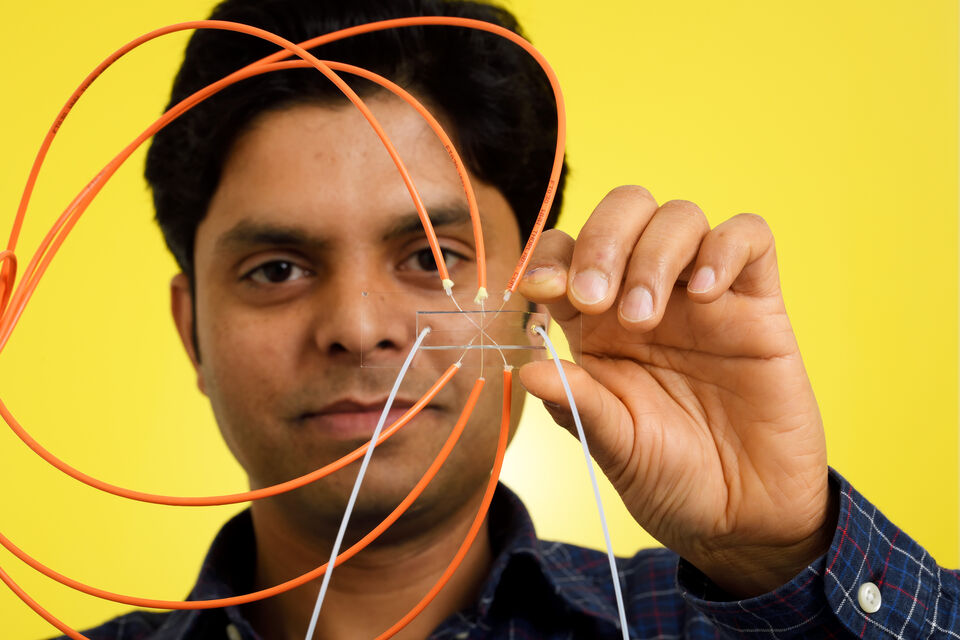Hemodialysis involves purifying the patient's blood by bringing it in contact via a membrane with the dialysis fluid, the ‘rinsing agent’ that extracts excess salts and other elements from the blood. The composition of this fluid is very precise: too high a concentration of certain substances and the extraction of these substances from the patient's blood will be insufficient - while too low a concentration will leave the patient with, for instance, too little sodium in the blood at the end of the dialysis session. And that can cause headaches, nausea and muscle cramps.
“So the dialysis fluid needs to be adjusted to the individual patient,” explains PhD candidate Manoj Sharma. “In practice, however, a one-size-fits-all approach is used, and the same dialysate is used for all patients.” Not, notes this Indian doctoral student, the optimum situation. “It would be much better to keep an eye on the composition of both the blood and the dialysate in real time; then you could adjust the concentration of certain substances in the fluid immediately.”
Light up
This prompted Sharma to develop a sensor that lights up when a fluid contains sodium - one of the four ions normally regulated by our kidneys. His device, a prototype the size of a matchbox, uses special sensor molecules pasted to the wall of a tiny fluid canal. As soon as these molecules come in contact with sodium ions in the fluid they emit light of a particular color, which is picked up by a minuscule light detector.
According to Sharma, there is an art to distinguishing sodium ions from other electrically charged particles in the blood, such as potassium, calcium, and bicarbonate. “That's very tricky when you are using a detector based on an electrode, but sensor molecules can be designed to suit each ion. If you can get sensor molecules for different ions to emit different colored light, you can even measure all concentrations simultaneously.” He didn't get this far while studying for his doctorate. “But we did demonstrate that by using these methods we really can distinguish different ions from one another in dialysis fluid.”
Two hundred liters
Achieving this same thing in blood will be more difficult, admits Sharma, although he has high hopes. But even just a sensor for detecting the flushing liquid can be very useful, he stresses. “During every dialysis session, which takes about four hours, close on two hundred liters of dialysis fluid are used up. And that's three to four times a week.” Because the composition can't yet be measured quickly and cheaply, this expensive fluid is flushed straight from the dialysis device down the drain, while with a good sensor it could easily be reused. “Then a few liters would be enough. Portable dialysis devices already exist, but in the future you could perhaps take your own flushing liquid with you when you travel, for your hemodialysis.”
Photo (above) | Bart van Overbeeke



Discussion